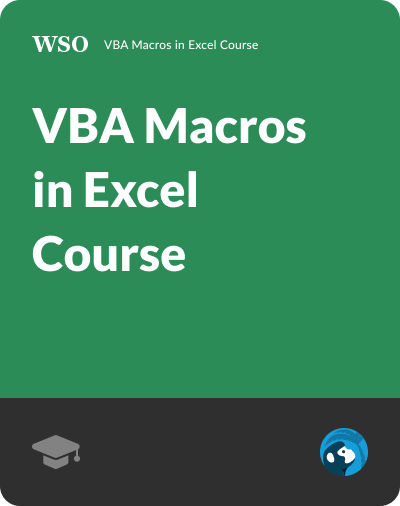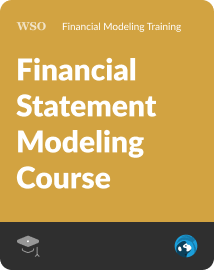Vanilla Option
A financial instrument that offers the holder the right, but not the duty
What is a Vanilla Option?
A vanilla option is a financial instrument that offers the holder the right, but not the duty, to purchase or sell an underlying asset at a defined price within a specific time frame.
A vanilla option is a call or puts choice with no unique characteristics. Such opportunities are standardized if traded on an exchange like the Chicago Board Options Exchange.
Individuals, corporations, and institutional investors utilize vanilla options to hedge their exposure to an underlying asset or to bet on the price movement of a financial instrument.
Leveraging is possible for options trading, allowing investors to profit or lose with more considerable capital. Beginners should be careful with options trading, enabling traders to lose their money much quicker with leverage.
In the general classification, there are two main types of options: the European-style option that must be in the money on the expiration date to be exercised, and the American-style option that can be exercised if it is in the capital on or before the expiration date.
There are various types of options, including barrier options, Asian options, and digital options. Investors use vanilla options to hedge their exposure to an underlying asset or speculate on a financial instrument's price movement.
Basics of a Vanilla Option
Before placing any vanilla options trades, it is necessary to understand the fundamental elements:
1. Puts and Calls
Calls and puts are the two primary forms of vanilla options. An individual can buy or sell an option.
For the options buyer:
A call buyer has the option to purchase the underlying instrument at the strike price but not the duty.
A put's buyer has the option to sell the instrument at the strike price but not the duty.
For the options seller:
The writer of the option is the person who sells it.
If the call option is exercised by its owner, shorting or writing an opportunity creates an obligation to sell the instrument.
If the put option is exercised by its owner, shorting or writing an opportunity creates an obligation to acquire the instrument.
2. Strike price
When a derivative contract is exercised, the strike price is the price at which it can be bought or sold.
There is a strike price for every option.
Here are the factors to affect the strike price
-
Tolerance to Risk
-
The payoff for Risk - Reward
-
Implied Volatility
-
Volume / Liquidity
3. Tolerance to Risk
Risk tolerance is one of the most significant factors determining the strike price. Your risk appetite will determine your choice of the strike price.
Depending on your risk tolerance, you can choose between ITM, ATM, and OTM options contracts. The risks associated with these options are different. Option contracts favor option buyers in the money but do not favor option sellers.
4. The payoff for Risk - Reward
The risk tolerance parameter is linked to this. If the risk is acceptable, investors can choose an OTM contract. If you are a risk-averse investor, you can select an 'In the Money' or 'At the Money' contract.
Vanilla Option Features
Let's take a look at some of the features below:
1. European style option versus American style option
For a European-style option to be exercised, the choice must be in the money on the expiration date.
It can be exercised if an American-style option is in the money on or before the expiration date.
Because they allow you to exercise any time, American options are in high demand, accounting for most of the options market. Because the expiration date is stated, it is possible to compute the loss or profit.
The risk of European Options is lower when the payment is determined by the underlying asset's current price (maturity).
2. Exotic alternatives
Exotic alternatives, such as barrier options, Asian options, and digital options, are more adaptable if a vanilla option isn't the appropriate fit.
3. Barrier options
A barrier option is a derivative in which the reward is contingent on the underlying asset reaching or exceeding a defined price.
4. Asian options
An Asian option pays out based on the average price of the underlying asset over a set period (maturity).
5. Digital options
A digital option, also known as a binary option, offers the opportunity of a fixed payout if the underlying market price exceeds a predetermined limit, called the strike price.
Exotic options are more complicated than standard options and are usually traded over the counter. They can be coupled to create complex structures that lower net costs and boost leverage.
Vanilla Options Examples
Here are some examples of how vanilla options operate for both calls and puts if you consider them part of your options trading strategy.
1. Vanilla Call Option
A call option allows you to buy a stock at a specific price within a defined time frame. Bullish investors often purchase call options and expect a stock's price to rise.
Let's say you're interested in a stock that trades at $50, and you can buy a call option on it for $55 per share within one month. It is a stock option for 100 shares.
This option has a $0.2 premium per share. As a result, the premium would be $20. You are under no obligation to buy the shares.
You can earn if the stock trades for more than $55.2 (option price plus premium).
2. A Vanilla Put Option
A put is a type of insurance that protects you if the value of your stock drops. It's one way for investors to sell a stock short. Here's an illustration.
Assume you hold 100 shares of a stock trading at $25 a share. You purchase a put option at a premium of $1 per share with a strike price of $25 that expires in two months. So you paid a total of $100 for a compensation of 100 shares.
The stock price lowers to $15 per share in a month. Because your strike price lets you sell the shares for $25 rather than $15, now is an excellent opportunity to exercise that premium.
You wouldn't make any money because you're essentially selling the stocks for what you paid for them ($25), and you might even lose money (the $1 per share premium).
Still, the alternative would be to lose even more money if you waited for the price to drop or didn't have the option.
Vanilla Option Advantages And Disadvantages
There are advantages and disadvantages of trading the vanilla option:
A few of the advantages are:
-
It will be less risky to buy stock directly as options trading only requires the premium as the initial investment
-
Leveraging is possible for options trading, allowing investors to profit enormously.
On the other hand, the disadvantages are:
-
You can lose your entire investment when the market goes against you.
-
Time restrictions are put on options trading.
-
Options can be convoluted or perplexing to understand.
Summary
A "vanilla option" is a form of financial instrument that allows its holders to buy or sell an underlier, or underlying asset, at a predefined rate within a specified time frame.
Options traders do not have to wait until the expiration date of a vanilla option to "close." Individuals or entities typically utilize it as a hedging strategy.
Leveraging is possible for options trading, allowing investors to profit or lose with more significant capital.
A European-style option must be in the money on the expiration date to be exercised. An American-style option can be exercised if it is in the capital on or before the expiration date. Exotic alternatives are available, such as barrier options, Asian, and digital options.
Vanilla Option FAQs
The holder of a vanilla option has the right to buy or sell the underlying asset at a defined price within a specified timeframe. No special terms or features are associated with this call or put option. It features a simple strike price and expiration date.
A European-style option must be in the money on the expiration date in order to be exercised. An American-style option can be exercised if it is in the money on or before the expiration date.
American options are in high demand since they allow you to exercise at any moment and account for most of the options market. Because the expiration date is specified, and the loss or profit may be calculated.
European Options have a reduced risk when the underlying asset's price determines the payment at a given moment (maturity).
The ideal strike price will be determined by criteria such as the investor's risk tolerance and the options premiums available in the market.
Many investors, for example, may hunt for options with strike prices close to the current market price of the securities, assuming that those options will be executed at a profit.
Simultaneously, some investors may seek options that are far out of the money—that is, options with strike prices that are very far from the market price—to achieve substantial gains if the options become lucrative.
The words striking price and exercise price are interchangeable. Some traders prefer one phrase over the other and may use the terms interchangeably, but their meanings are identical. In derivatives trading, both words are commonly used.
Researched and authored by Ka Chun CHIU | LinkedIn
Free Resources
To continue learning and advancing your career, check out these additional helpful WSO resources:









or Want to Sign up with your social account?